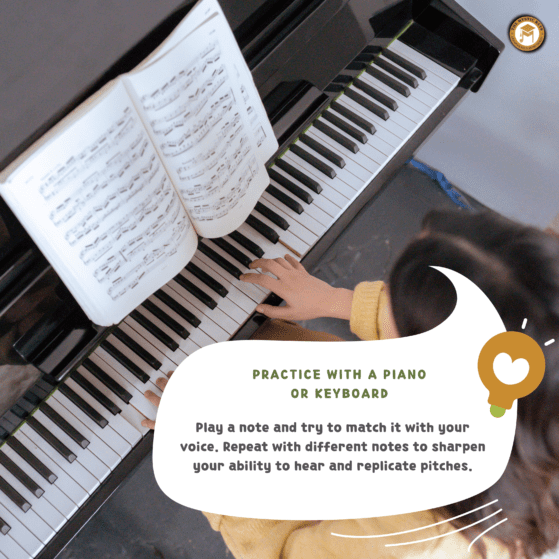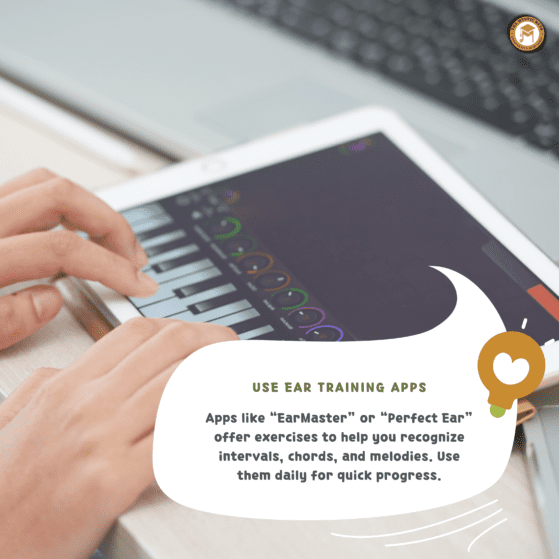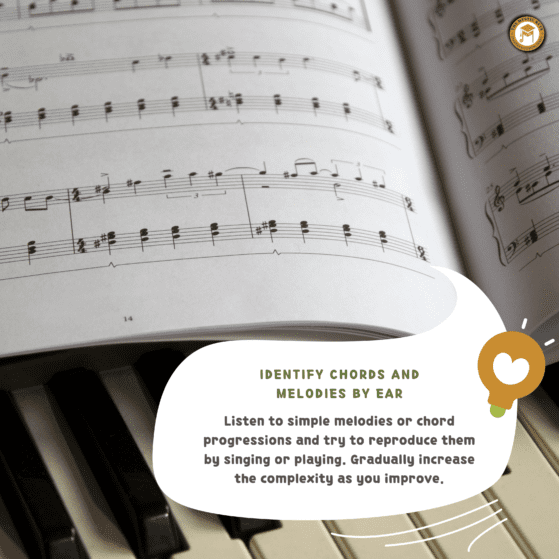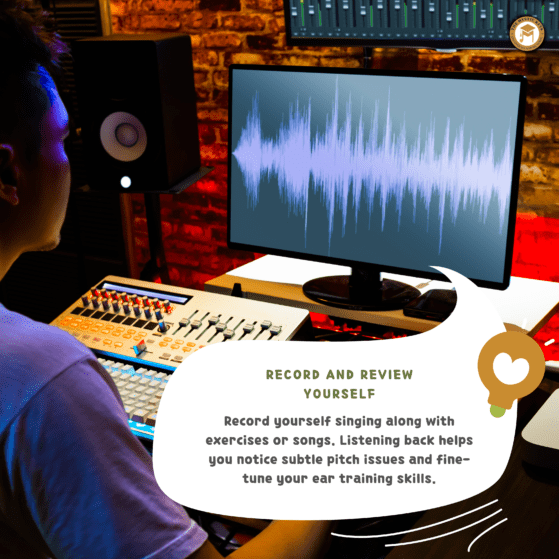How to Train Your Ear for Perfect Pitch
As a singer, one of the most valuable skills you can develop is perfect pitch or, at the very least, highly accurate relative pitch. Perfect pitch allows you to identify and reproduce any musical note without a reference, while relative pitch is the ability to identify the distance between notes (intervals). Ear training helps sharpen both of these skills, improving your overall musicianship, pitch accuracy, and vocal performance.
At The Mystic Keys, we believe ear training is essential for singers at all levels. This guide will cover the importance of ear training, provide steps to improve your pitch recognition, and offer useful tips to help you practice effectively.
Why Ear Training is Essential for Singers

Ear training is a critical part of a singer’s development. It involves learning to identify notes, intervals, chords, and melodies purely by listening. Singers who train their ears find it easier to sing in tune, harmonize, and adapt to different musical settings.
When you train your ear, you improve your ability to:
Recognize intervals: The distance between two notes.
Match pitch accurately: Sing the correct note consistently.
Stay in tune: Maintain intonation throughout a piece.
Harmonize: Sing complementary notes alongside a melody.
Without ear training, even the most talented singers can struggle to stay on pitch or make harmonies sound cohesive. That’s why we recommend making ear training a regular part of your practice routine.
Step-by-Step Guide to Ear Training
1. Start with Interval Training

One of the first exercises for ear training is learning to recognize intervals, which are the distances between two notes. Understanding intervals is foundational for improving your pitch recognition. Start by practicing the most common intervals, such as seconds (the distance between two consecutive notes) and thirds (the distance between two non-adjacent notes).
How to practice: Sing two notes, and listen for the difference between them. For example, play a note on the piano, then sing the note a third above or below it. Practice identifying intervals both upwards and downwards until you can easily recognize common distances like 2nds, 3rds, 5ths, and octaves.
2. Practice with a Piano or Keyboard

Using an instrument like a piano or keyboard is an effective way to fine-tune your ability to match pitch. Simply play a note and then try to sing it back with perfect accuracy. If you have difficulty, try sliding up or down with your voice until you match the pitch exactly. This will train your ear to recognize different notes and develop muscle memory in your voice.
Pro Tip: Begin with a few notes in a comfortable range, then expand as you get better. Over time, this practice will help you build confidence in recognizing and reproducing notes correctly.
3. Sing Along to Scales

Another excellent exercise for ear training is singing along with scales. Singing scales will not only improve your pitch recognition but also strengthen your voice, helping you stay on pitch more consistently.
How to practice: Play major and minor scales on the piano, then sing along with them. Listen carefully to each note and make sure you’re singing in tune. You can also try switching between different key signatures to challenge your ear and get comfortable in various musical settings.
4. Use Ear Training Apps

Thanks to technology, there are now many ear training apps that make it easy to practice daily. Apps like “EarMaster” and “Perfect Ear” provide a range of exercises to help you recognize intervals, chords, and melodies. These apps are perfect for beginners and advanced singers alike, as they allow you to practice on the go and track your progress over time.
Pro Tip: Use these apps as a supplement to your regular practice routine. Spending just 10–15 minutes a day on ear training exercises can lead to noticeable improvement over time.
5. Identify Chords and Melodies by Ear

As your ear develops, you should start practicing by identifying chords and melodies by ear. Listen to simple melodies or chord progressions and try to reproduce them either by singing or playing them on an instrument. This helps train your ear to recognize the structure and harmony in a piece of music.
How to practice: Begin with simple two- or three-chord progressions, and sing along with them. Once you feel comfortable with simple progressions, challenge yourself with more complex melodies and chords. The goal is to strengthen your ability to hear and recognize notes, intervals, and harmonies in real-time.
6. Practice Sight Singing

Sight singing is a valuable tool for developing your ear and improving your musicianship. It involves reading sheet music and singing the notes on sight before hearing them. This strengthens your ability to recognize pitch and improves your confidence in staying on tune.
How to practice: Start with easy pieces, gradually moving to more complex ones as you improve. Once you’ve sight-sung a passage, play the notes on the piano to check how close you were to the actual pitches. This feedback loop will help you become more accurate over time.
7. Record and Review Yourself









